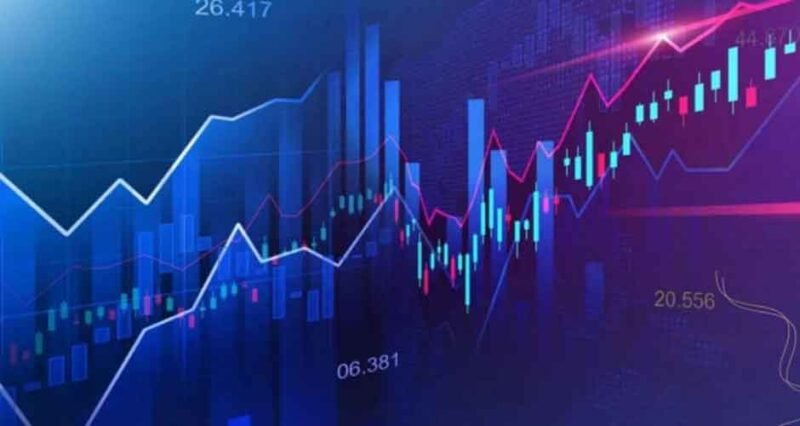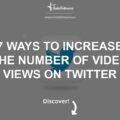
The reason behind so many people getting interested in forex trading is the countless opportunities that are there in the constantly fluctuating currency market. The high liquidity and decentralised nature of the forex market make it a perfect place for global traders. The flexibility and convenience you get with the market hours divided into 4 major trading sessions, enables traders to make profits anytime and from anywhere eliminating the constraints of time and geographical boundaries. In the earlier days, finding the perfect trade setup was a complex process for a beginner.
But these days the task is easier as traders have access to a lot of advanced trading tools like powerful charting software programs and automated trading calculators providing accurate data and metrics for making rational trading decisions. In this article, I will be sharing some valuable tips that can help you to find the ideal trade setups in the forex market, based on your strategy.
Analyse the market using different methods
The first thing that you need to learn for becoming a forex trader is market analysis as one who is not able to decode the market situation will never be able to execute a trade with perfection. You should be well-versed in the market dynamics to be able to anticipate potential price movements with accuracy. You may not be able to predict the price fluctuations with 100% precision all the time. But a trader who can make calculated moves and apply logic along with a strategic approach can surely make profits from favourable price changes in currency pairs.
There are 3 types of analysis that you can do for making trading decisions based on the market changes. The first one is technical analysis which is the most commonly used analytical approach in the forex market. Technical analysis is done by using charts that contain the market data about price movements in a visual format making it more comprehensive. The price fluctuations in the forex market always form a pattern and a chart analyst will be able to interpret the market situation by reading these patterns.
Technical analysis is based on the assumption that the patterns are repetitive and once you spot the start of a pattern, you will be able to predict the direction in which the prices will move based on what that pattern suggests. Market knowledge is very important for getting good at technical analysis and for that, you can make use of a demo account to develop your skills, try out new strategies and gain more practical knowledge by practising in a risk-free environment with virtual funds and real-time market data.
The 2nd type of analysis that forex traders rely on is fundamental analysis which is not just focused on price movements but goes deeper to find what caused these price fluctuations. This can be economic and geo-political factors including key economic data releases revealing the state of a country’s economy and its currency’s value, along with important news releases that have an impact on the forex market or specific currency pair prices. An economic calendar is an essential tool to use for staying updated about such events and making informed trading decisions.
However, traders who are not following long-term strategy tend to focus on technical analysis alone as the fundamentals may not have much to do with the short-term trends that they look for. But you should always keep an eye on the news and data releases as they can still cause long-term effects and short-term volatility as the market sentiments can change when there is an impactful event happening. An example of this can be the Federal Reserve or ECB announcing interest rate revisions.
This takes us to the 3rd and last type of analysis which is sentiment analysis. Sentiment analysis is about understanding the market psychology and taking positions after considering what type of positions will be taken by your fellow traders in a particular market scenario. Market sentiments play a key role in many situations as the assets or currency pairs get oversold or overbought due to the overall market sentiments being bullish or bearish. So, when you combine all 3 types of analysis, it gives you a clear overview of the market, allowing you to find the best trading opportunities.
Confirm your Trading Signal with Price Action
As I stated earlier, technical analysis is one of the primary analytical approaches that forex traders follow to get some valuable insights about the market situation and price action strategies are perfect for finding the most favourable entry and exit points for trade with precision. Japanese Candlestick charts are the standard in forex trading and they are very popular among traders due to the detailing done with candles. Each candle denotes the price movements that happened in a specific time period. The shorter timeframes are harder to trade even though the duration of trades is shorter.
Traders can check the patterns for different time frames starting from 1 minute charts which are used by scalpers trying to make quick profits by executing multiple trades within a short span of time. It would be better to start with longer timeframes first as they are easier to follow for a beginner. If you don’t want to watch daily or weekly charts, you can stick to the 4-hour charts which are neither too long nor too short. You may also use some technical indicators to get more data about the market but a trading signal should be confirmed with price action in the end.
Because no technical indicator can be completely reliable as they may often provide contradictory information making the trading process harder for a newbie. Hence, I will recommend using fewer indicators to avoid information overload and confusion. Price action strategies can generate good results when you have the required skills to implement them. You need to personalise the strategy in a way that it suits your trading style and fully aligns with your trading goals. Seeking relevant information for studying these topics is crucial to improving your trading skills.
Price action trading is a simple and straightforward approach as it only looks at the price movements without complicating things. Indicators are used to add more information to the price charts and some traders don’t use any indicator for planning their trades. This may not be ideal for everyone and there is no harm in using some indicators like Moving Averages, RSI and Fibonacci retracements as they can add more precision to our findings which helps us to take the best course of action.
Avoid trading when there is a high-impact news
The last tip may trigger FOMO for some traders especially if you are interested in strategies like News trading. But trading when there is high-impact news can increase your exposure to risk as you can’t predict the outcome of a news within the first few minutes. You must stay away from the market for a while until the sudden volatility caused by the news event subsides, making the market situation clear for a trade. Otherwise, you may enter a trade based on your quick analysis and guesswork which may not turn out to be correct in every situation.
Traders who have a lot of experience also refrain from trading when there is high-impact news or ahead of a key economic data release as the best approach to follow here is waiting until the market responds to the news. The market sentiments will also be impacted by the news and you should not jump in before things are settled. The high volatility during a news event may lead to slippage as well due to a low trading volume as the majority of traders prefer to play it safe.
You don’t need to take the excess risk to catch these opportunities and being patient will be the best thing you can do when there is a lot of price action happening after a news event. You should not place trades in a hurry as that will result in a lot of mistakes. Make sure that your emotions are under control as any kind of emotional bias can lead to a deviation from your original strategy and you might place a trade due to the fear of missing an opportunity like I said before.
Fear, stress and excitement should not overpower your logical thinking process as being impulsive and making a decision in a state of panic is the worst thing you can do as a trader. Thus, let the market move before making any decision and if you don’t see any opportunities that align with your strategy, don’t force trades for the sake of trading.
Final Thoughts
So, these are the 3 tips that every forex trader needs to follow to find the perfect trade setup in the forex market. Even though it was just 3 tips, there are a lot of aspects that we have discussed in this article and paying close attention to all these points is essential to managing your risk and creating a track record of success in the long run.

